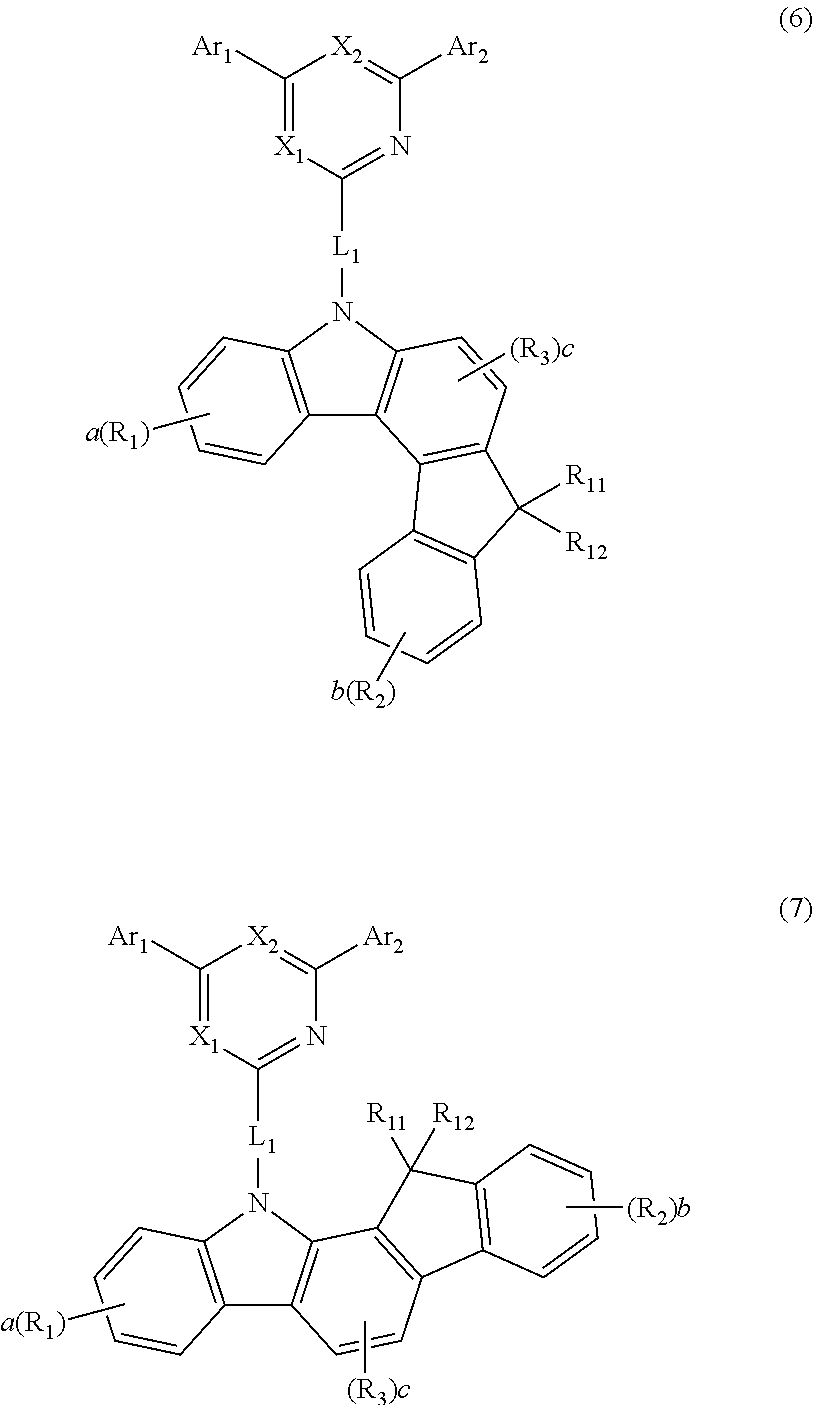An organic electroluminescent compound and an organic electroluminescent device comprising the same
a technology electroluminescent compounds, which is applied in the direction of luminescent compositions, organic chemistry, chemistry apparatuses and processes, etc., can solve the problems of short operational life reduced device life, and inability to improve luminous efficiency, etc., to improve the thermal stability of organic electroluminescent devices, improve the effect of lifespan characteristics
- Summary
- Abstract
- Description
- Claims
- Application Information
AI Technical Summary
Benefits of technology
Problems solved by technology
Method used
Image
Examples
example 1
DEVICE EXAMPLE 1
Production of an OLED Device Using the Organic Electroluminescent Compound According to the Present Invention
[0091]An OLED device was produced using the organic electroluminescent compound according to the present invention. A transparent electrode indium tin oxide (ITO) thin film (15 Ω / sq) on a glass substrate for an organic light-emitting diode (OLED) device (Geomatec, Japan) was subjected to an ultrasonic washing with trichloroethylene, acetone, ethanol, and distilled water, sequentially, and was then stored in isopropanol. Next, the ITO substrate was mounted on a substrate holder of a vacuum vapor depositing apparatus. N4,N4′-diphenyl-N4,N4′-bis(9-phenyl-9H-carbazol-3-yl)-[1,1′-biphenyl]-4,4′-diamine (compound Hl-1) was introduced into a cell of said vacuum vapor depositing apparatus, and then the pressure in the chamber of said apparatus was controlled to 10−6 torr. Thereafter, an electric current was applied to the cell to evaporate the above introduced materia...
example 2
DEVICE EXAMPLE 2
Production of an OLED Device Using the Organic Electroluminescent Compound According to the Present Invention
[0093]An OLED device was produced in the same manner as in Device Example 1, except for using compound H-58 for the host as the light-emitting material. The produced OLED device showed a green emission of which the time taken for the luminance at 15,000 nit to be reduced from 100% to 95% at a constant current was 8.9 hours.
PUM
| Property | Measurement | Unit |
|---|---|---|
| pressure | aaaaa | aaaaa |
| thickness | aaaaa | aaaaa |
| thickness | aaaaa | aaaaa |
Abstract
Description
Claims
Application Information
 Login to View More
Login to View More - R&D
- Intellectual Property
- Life Sciences
- Materials
- Tech Scout
- Unparalleled Data Quality
- Higher Quality Content
- 60% Fewer Hallucinations
Browse by: Latest US Patents, China's latest patents, Technical Efficacy Thesaurus, Application Domain, Technology Topic, Popular Technical Reports.
© 2025 PatSnap. All rights reserved.Legal|Privacy policy|Modern Slavery Act Transparency Statement|Sitemap|About US| Contact US: help@patsnap.com



